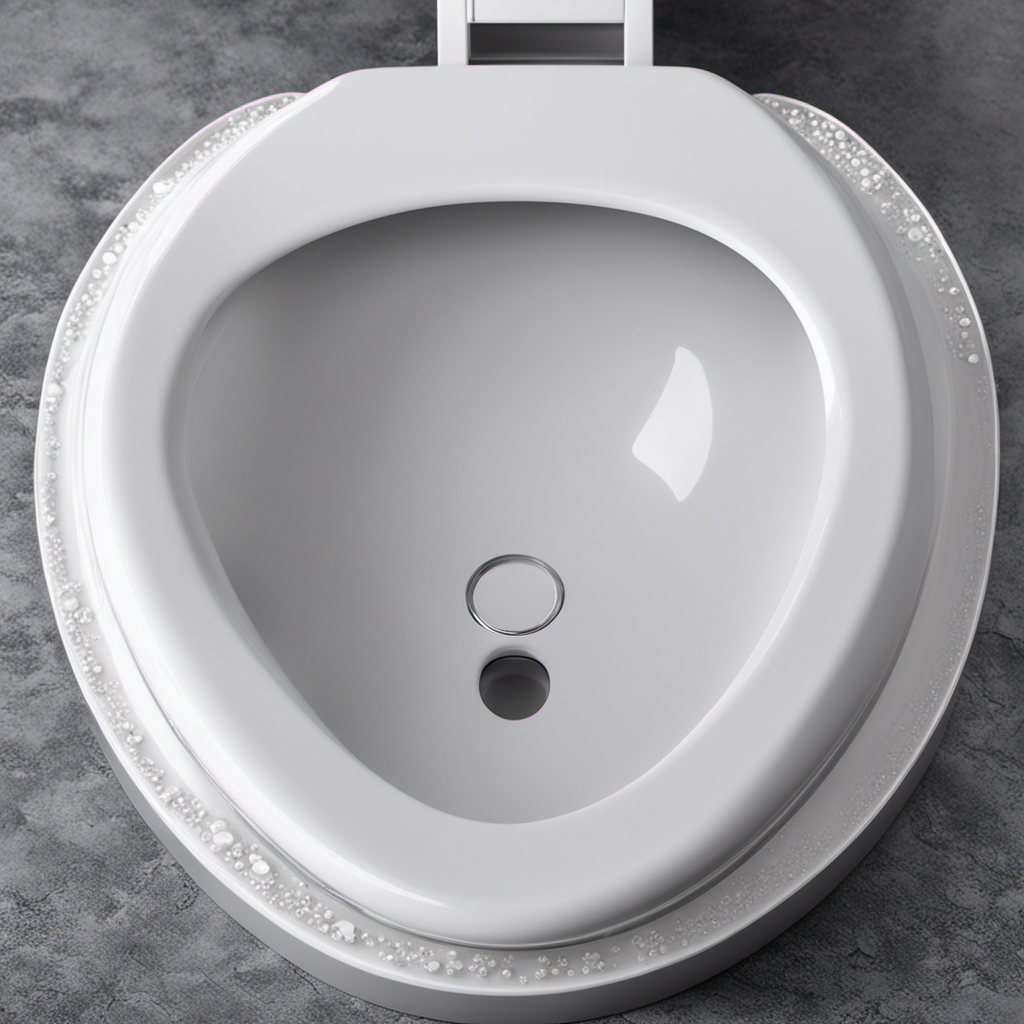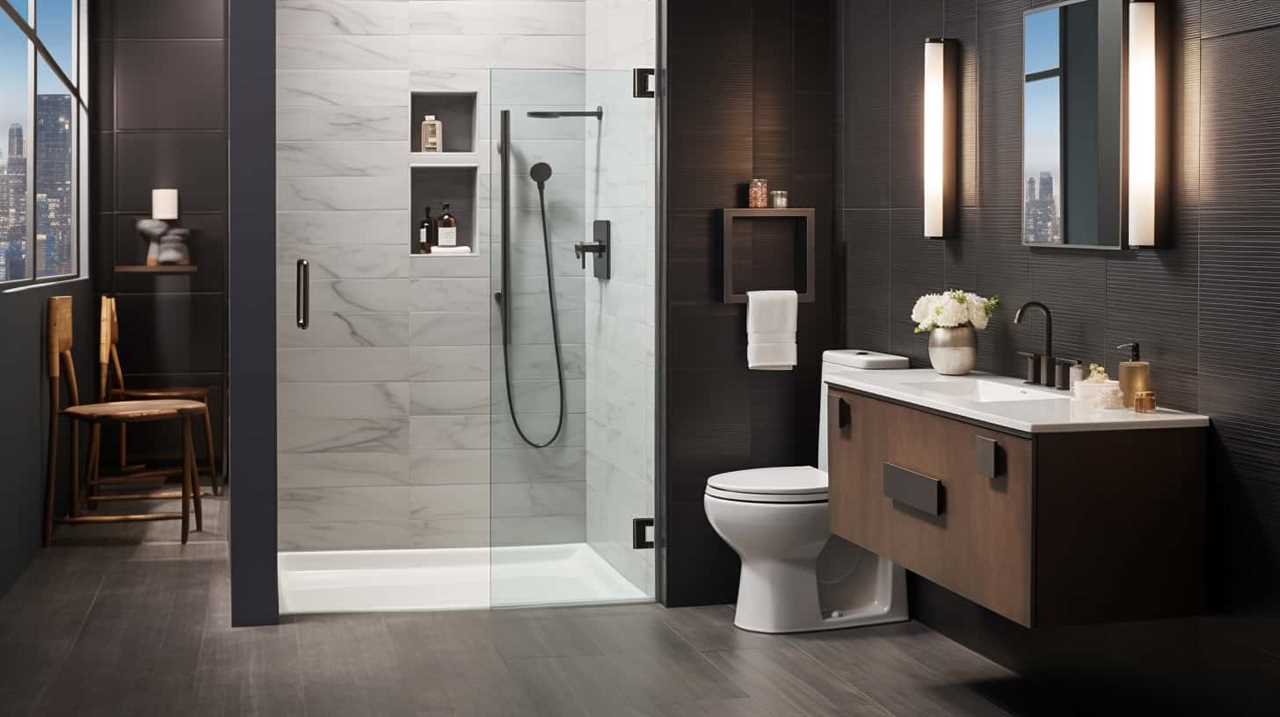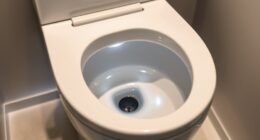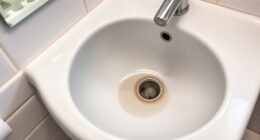Ever had the displeasure of encountering brown water in your toilet? I understand the frustration and embarrassment that comes with it. But fear not, for I am here to guide you through the process of fixing this unpleasant issue.
In this article, I will provide you with expert knowledge and precise instructions on:
- Identifying the causes
- Addressing plumbing problems
- Cleaning and disinfecting your toilet bowl
- Preventing future occurrences
Get ready to bid farewell to brown toilet water and welcome back pristine cleanliness.
Key Takeaways
- Rust in pipes can cause water discoloration, leading to brown toilet water.
- Brown toilet water can have health implications, so it is important to promptly address the issue.
- Checking for clogs or blockages in toilet pipes is crucial to assess and address plumbing issues.
- Regular cleaning, disinfecting, and preventive measures help maintain clear and clean toilet water.
Understanding the Causes of Brown Toilet Water
One common cause of brown toilet water is the presence of rust in the pipes. When water comes into contact with rusted pipes, it can pick up iron and other minerals, resulting in water discoloration. This can be alarming and concerning for many homeowners.
Not only is brown toilet water visually unappealing, but it also raises health implications. Drinking or using water contaminated with rust can lead to various health problems, including stomach issues, skin irritation, and even long-term effects on the liver and kidneys.
It’s important to address this issue promptly to ensure the safety and well-being of yourself and your family. Understanding the causes of brown toilet water is the first step towards finding a solution and restoring clean, clear water to your toilet.
Assessing and Addressing Plumbing Issues
To assess and address plumbing issues, you should start by checking for any clogs or blockages in your toilet pipes. Plumbing maintenance is crucial to ensure a properly functioning toilet. If you notice that your toilet is not flushing properly or if you experience frequent backups, it may indicate a clog in the pipes.
Troubleshooting toilet problems involves inspecting the drain lines for any obstructions and using a plunger or a plumbing snake to clear them. Additionally, checking the water supply valve to ensure it is fully open and inspecting the flapper valve for any damage or wear can help identify and fix plumbing issues.
By addressing these problems, you can ensure proper toilet functionality and prevent further issues.
Now, let’s move on to cleaning and disinfecting the toilet bowl.
Cleaning and Disinfecting the Toilet Bowl
Make sure you regularly clean and disinfect your toilet bowl to maintain a hygienic bathroom environment. Not only does proper toilet maintenance prevent unpleasant odors, but it also helps to prevent the spread of harmful bacteria and germs.
Here are three effective cleaning methods to ensure your toilet bowl stays clean and germ-free:
-
Use a toilet brush and a disinfectant cleaner to scrub the inside of the bowl, paying special attention to the rim, under the rim, and the waterline.
-
For stubborn stains and mineral buildup, try using a mixture of baking soda and vinegar. Let it sit for a few minutes before scrubbing with a brush.
-
To further disinfect the toilet bowl, consider using a bleach-based cleaner or hydrogen peroxide. Apply the cleaner, let it sit for a few minutes, and then flush the toilet.
Removing Stains and Residue From Toilet Fixtures
Regularly cleaning and disinfecting your toilet bowl helps to remove stubborn stains and residue from the fixtures, ensuring a hygienic bathroom environment. However, sometimes even with regular cleaning, toilet discoloration can occur due to various factors.
One common cause of brown toilet water is water treatment. Many water treatment facilities use chemicals, such as chlorine, to disinfect the water supply. These chemicals can react with minerals in the water, resulting in discoloration.
To address this issue, you can try using a toilet bowl cleaner specifically formulated to remove stains and discoloration. Look for products that contain ingredients like hydrogen peroxide or citric acid, as they can be effective in breaking down and removing stubborn stains.
Additionally, consider installing a water filter or water softener to improve the quality of your water and prevent future discoloration.
Preventive Measures to Maintain Clear and Clean Toilet Water
Using a water filter or water softener can help improve the quality of your bathroom’s water and prevent future discoloration in the toilet bowl. Here are three reasons why investing in water filtration is a smart choice:
-
Health benefits: By removing impurities and contaminants from your toilet water, a water filter ensures that you and your family are not exposed to harmful substances. This can help prevent skin irritation and other health issues.
-
Aesthetically pleasing: Clear and clean toilet water not only looks better but also creates a more pleasant bathroom experience. You’ll feel more confident knowing that your toilet is free from unsightly discoloration.
-
Cost-effective: Installing a water filter or water softener may require an initial investment, but it can save you money in the long run. By preventing toilet water discoloration, you’ll avoid the need for expensive cleaning products or professional services.
Investing in water filtration is a proactive step towards maintaining clear and clean toilet water.
Conclusion
In conclusion, addressing brown toilet water is essential for maintaining a clean and hygienic bathroom. By understanding the causes and addressing plumbing issues promptly, you can prevent further discoloration.
Regular cleaning and disinfecting of the toilet bowl, as well as removing stains from fixtures, will help restore the water’s clarity. Implementing preventive measures, such as using a toilet tank cleaner and avoiding harsh cleaning products, will ensure long-term maintenance.
So, why settle for discolored water when a clear and clean toilet is within reach?










